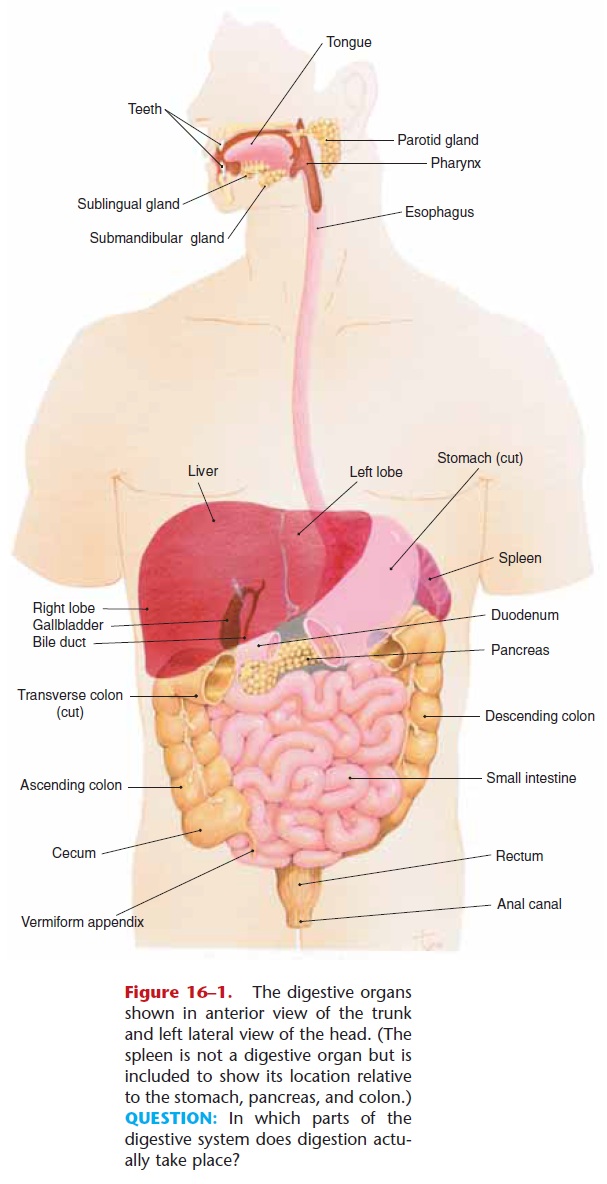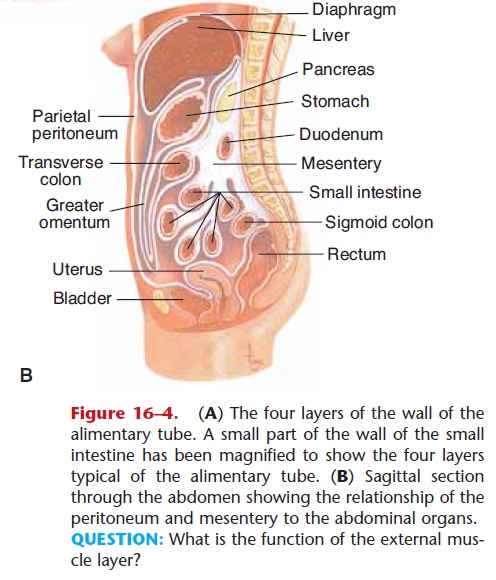Chapter: Essentials of Anatomy and Physiology: The Digestive System
Small Intestine - Anatomy and Physiology
SMALL INTESTINE
The small intestine is about 1 inch (2.5 cm) in diam-eter and approximately 20 feet (6 m) long and extends from the stomach to the cecum of the large intestine Within the abdominal cavity, the large intestine encir-cles the coils of the small intestine (see Fig. 16–1).

The duodenum is the first 10 inches (25 cm) of the small intestine. The common bile duct enters the duo-denum at the ampulla of Vater (or hepatopancreatic ampulla). The jejunum is about 8 feet long, and the ileum is about 11 feet in length. In a living person,however, the small intestine is always contracted and is therefore somewhat shorter.
Digestion is completed in the small intestine, and the end products of digestion are absorbed into the blood and lymph. The mucosa (see Fig. 16–4) has simple columnar epithelium that includes cells with microvilli and goblet cells that secrete mucus. Enteroendocrine cells secrete the hormones of the small intestine. Lymph nodules called Peyer’s patches are especially abundant in the ileum to destroy absorbed pathogens. The external muscle layer has the typical circular and longitudinal smooth muscle layers that mix the chyme with digestive secretions and pro-pel the chyme toward the colon. Stimulatory impulses to the enteric nerves of these muscle layers are carried by the vagus nerves. The waves of peristalsis, however, can take place without stimulation by the central nervous system; the enteric nervous system can function independently and promote normal peristalsis.


There are three sources of digestive secretions that function within the small intestine: the liver, the pan-creas, and the small intestine itself. We will return to the small intestine after considering these other organs.
Related Topics